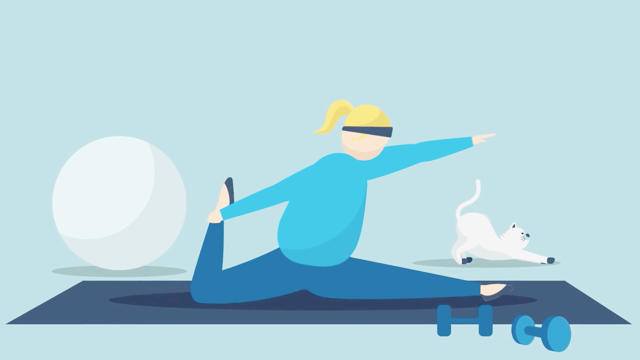So 2017 is finally here and once again you’re determined to get healthy and drop those extra pounds. You and millions of others. It’s far and away the most popular promise we make as that ball drops in Times Square. Yet sadly, statistically speaking, you’re very likely to drop the ball on that get-healthy goal.
Tech innovation is increasingly playing an important part in the laudable bulge battle. Think Fitbit and any number of apps that count calories and log meals. But now there’s what Scientific Reports’ Nature calls a crucial new tool: artificial intelligence.
The popular app Noom is one of the biggest to turn to AI. An analysis of the results of 35,921 users from 2012 to 2014 found interesting results: 77.9% of participants reported a decrease in body weight; 25% lost more than 10% of their body weight; and nearly 80% reported they kept the weight off for more than nine months.
The app uses AI to sift through a user’s exercise and food logs and suggest personalized diets and changes in fitness regimens to maximize a user’s weight loss. The AI also helps educate, suggesting articles that explain things like why whole grain bread is better than white.
But since the study, Noom has added an old-school approach to its data-driven app: real-life weight loss coaches. Actual human beings.
Noom’s president, Artem Petakov, told Fast Company that he’s seeing even greater success that takes all the calories in/calories out math that most apps gather and turns it into motivation. Personalized programs start at about $45 a month.
Here are Noom’s four keys to success:
Change Your Brain To Change Your Body
The data entered by users goes to their coach’s dashbord and then the coach offers immediate feedback—and empathy—to keep clients on track.
Noom’s mantra is that to change your body, you have to change your brain.
“We all have low will power,” says Petakov, who has a background in both artificial intelligence and cognitive therapy psychology. “It’s not about the strength of one’s willpower; it’s about behavioral change. And behavioral change is a skill that can be learned.
“You analyze what contributed to the bad behavior becoming a habit so you can learn its cause and then you can take the cause to replace it with a better behavior,” says Petakov. “This is a process that can be learned just like math or a foreign language can be learned.”

Noom made a refreshingly honest appraisal of the data it gathered: AI is not a cure-all and can’t do what a chat with a human coach in real time can do.
“In May we took the bold step of discontinuing all of the programs that are purely AI, and going for a hybrid approach,” says Petakov. “What we found is that with a human coach the results for users were about three times better, as opposed to just having an AI-based coach.”
Identify Your Triggers
AI cannot match the live coach’s ability to understand and identify the emotional processes and thought patterns that trigger bad eating behavior, Petakov says.
“We tried points. We tried badges. We tried levels. None are as powerful as (another person at) keeping somebody motivated, on track, and excited in the tough moments. It’s having an accountability buddy. There’s a reason why programs like AA and the other accountability programs are effective,” says Petakov.

Why Do You Want To Lose Weight?
Noom discovered that coaches who get their clients to identify their motivation for getting healthier have more success. Promising you’ll buy yourself a new Xbox if you drop two pant sizes has one major problem: In the end you’ll probably get that Xbox even if you fail.
So whether it’s to fit into that dress for your reunion or to set a healthy example for a child, keeping a user’s eye on why they want to change their habits is another key.
“Identify your fundamental intrinsic motivations and then pick the reward really carefully and make sure it is meaningful,” says Petakov.

Make Sure You’re Ready For The Journey
“You aren’t going to do yourself any good if you start a weight-loss program before you can fully commit to seeing it through,” says Petakov. “So make sure you are ready. If you quit halfway you won’t see any results and you will have put in a bunch of work and that will just discourage you in the future from trying again.”
“Don’t go into it with an ‘I might try this’ kind of attitude. Take the plunge and really give it a really serious shot. That is the way to get the motivational wheel going. And once you start seeing some results then you will feel like you want to keep going until you eventually achieve your desired goal.”
Fast Company , Read Full Story
(68)